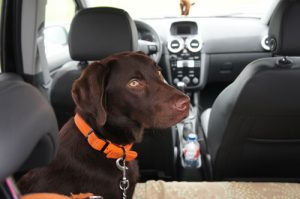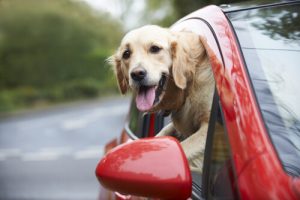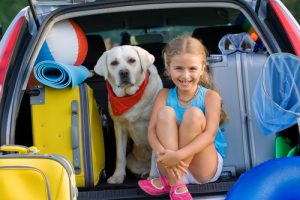Seatbelt Safety: Why Your Dog Should Buckle Up

Our pets are completely dependent on us. So, we are committing to guaranteeing their safety. And when we’re travelling by car, the rule is the same. That’s why it’s so important. If we’re driving with our furry friend in tow, we comply with safety regulations. That means putting a seatbelt on your dog.
As we’ve said, one of the most important safety regulations is the use of a seatbelt. You’ve probably heard that there are finally commercially-available seatbelts for dogs. Sure, they’ve been on the market for a number of years by now. However, they are still not mandatory in a number of countries. And, many people don’t even know that they exist, much less how to use them.
The advantages of seatbelts for dogs

Regardless of whether the law obliges it or not, we naturally want to protect our dog at all times. That’s why knowing about seatbelts for dogs, and how to use them, is so essential. This is necessary knowledge when it comes to caring for pets.
And, some studies have shown that a dog weighing 25 kilos that gets in the middle of a traffic accident can become a projectile. Basically, this is a risk if the dog isn’t wearing a seatbelt. And, it could end up causing further harm to other humans in the vicinity.
One familiar characteristic of car rides with our dogs is the distractions. It’s very rare to encounter a dog who will sit still all the way. In fact, sometimes their restlessness can cause accidents. Basically, they can put the driver on edge. According to scientific research, distraction caused by pets plays a part in up to 60% of car accidents. Not to mention, this affects less serious vehicle altercations, too.
For example, when we are travelling with our pet, it’s hard to avoid looking back. We want to see what he’s up to. And, we want to check whether he’s feeling carsick or has fallen asleep. But, that’s not to mention the fact that, when it comes to smaller dogs, they often try constantly to approach the driver and sit on his or her lap.
All of these circumstances generate unnecessary distractions. Luckily, putting a seatbelt on your dog is a perfect way to avoid that.
What’s the best dog seatbelt to choose?
Since there is, in most countries, no explicit regulation or law that requires dogs travelling in cars to wear a specific kind of seatbelt, it’s best to choose a harness that keeps the animal’s whole body protected and that, together with the belt itself, will help to reduce its mobility.
There are hundreds of different products on the market to choose – be sure to check that the one you’re looking at is scientifically tested and proven to be effective. It could be the thing that saves your dog’s life. For one thing, make sure you get a safety certificate along with the safety belt.
How to use a doggy seatbelt

Using a safety belt in the car is very simple. The harness, which we should certify and check before use, will have a hook that the seatbelt attaches to. This is what you will use to strap your dog in and make sure that it stays safe and secure in its seat.
Of course when you first start using it, your dog won’t be used to having a seatbelt on, so it’s important to get him or her accustomed to it. Wondering how to do that? Well, it’s not too complicated. Before starting the car, put your dog inside and attach the harness. The dog may try to take it off, or start whimpering and moving around restlessly. This is normal – give him or her lots of love and affection, so they see that you are there and nothing bad is going to happen.
Do this several times before putting the dog in the car with the seatbelt on for real. Once you see that the dog is no longer hesitant, take it out for a little trip – perhaps a short spin around the local town or close to your home. You definitely shouldn’t dive straight into a long trip without first taking these steps, because it could be risky. Remember that your dog will have to go through a process of adapting to this new experience.
So as you can see, securing your dog with a seatbelt is a simple step you can take to protect your dog’s life, as well as that of yourself and your family. You should be able to find a quality dog seatbelt in specialized pet shops, as well as in general stores that have vet clinics attached. And of course, you can also find some great products on the Internet – just be sure to check that the one you go for is fully certified and tested. Have a good trip!
This text is provided for informational purposes only and does not replace consultation with a professional. If in doubt, consult your specialist.